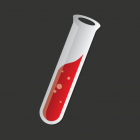Week 1 - Testing the Concept
Goals for the Week:
- Create a basic system to test the real-time audio visualization concept
- Understand how to interface with the LED strips acquired from Professor Rahul
Hardware/Mechanical Work:
We did not have any information relevant to the LED strips we were using, so we did some research and figured out that we are using LPD8806 to drive RGB LEDs within the strip. All the power and data lines are connected in series. We also built up our input circuit. We take in the aux input and filter it with a lowpass filter and then pass the signal to an Mbed for processing.
Software Work:
We created a program to turn the audio input into a visual output in a fast enough time span that the visuals appear to be in time with the audio. First, the program uses a timer interrupt to take an analog input reading from the aux input every 1.25 milliseconds (800 Hz sampling). Second, for every 40 samples a DFT is performed to determine how much of the aux input is determined by frequencies under 400 Hz (half the sample rate). Finally, this information is used to determine how much voltage is applied to a single, simple blue LED through the Mbed’s analog output pin. This voltage determination occurs 20 times per second, making the system essentially operate at 20 frames per second.
Results from this Week:
The first result from this week as that we knew how to interface with the LED strip for future integration into the project. The second result of this week was that we could get a blue LED to light up with an intensity that matches the intensity of the base in a song.
